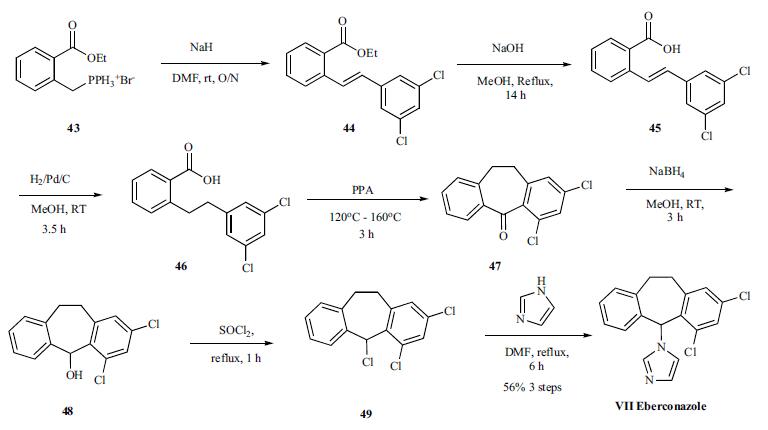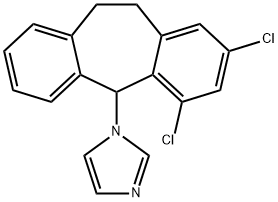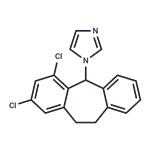Description
Eberconazole is a new member of the azole class of antifungal agents, and it is
indicated for the topical treatment of cutaneous fungal infections, including tinea
corporis (ringworm of the body), tinea cruris (ringworm of the groin) and tinea
pedis (athlete’s foot) infections. Its mode of action is similar to that of other azole
antifungals, namely inhibition of fungal lanosterol 14α-demethylase. Eberconazole
exhibits good in vitro activity against a wide range of Candida species, including
Candida. tropicalis, dermatophytes and Malassezia spp. yeasts. It shows good activity
against Candida. Parapsilosis (MIC
90=0.125 mg/mL), which is a relevant species
in skin and nail disorders. In addition, eberconazole is effective against some of
the highly triazole-resistant yeasts such as Candida. glabrata and Candida. krusei, as
well as fluconazole-resistant Candida. albicans. However, eberconazole is less active
than clotrimazole and ketoconazole against Candida. neoformans and a number of
clinically relevant molds. Eberconazole is supplied as a 1% or 2% cream, and the
topical application does not result in detectable serum, urine, or fecal levels. In a
phase II study of 60 patients with tinea corporis and tinea cruris, treatment with
topical eberconazole (1% or 2% cream), applied once or twice daily for 6 weeks,
resulted in cure rates ranging from 73.3–93.3% at the end of therapy, and
66.7–100% six weeks post-therapy.
Definition
ChEBI: 1-(2,4-dichloro-10,11-dihydrodibenzo[a,d][7]annulen-5-yl)imidazole is a member of the class of dibenzannulenes that is 10,11-dihydrodibenzo[a,d][7]annulene carrying two chloro substituents at positions 2 and 4 as well as an imidazol-1-yl substituent at position 5. It is a member of imidazoles, an organochlorine compound and a dibenzannulene. It derives from a hydride of a dibenzo[a,d][7]annulene.
Synthesis
The synthesis of Eberconazole started with the Wittig reaction of the phosphonium
bromide 43 with the 3,5-dichlorobenzaldehyde to
give the olefin mixture 44. Hydrolysis of the ester followed
by hydrogenation gives acid 46, which was cyclized to tricyclized
ketone 47. Completion of the synthesis was accomplished
in three steps via reduction of the ketone 47 with
sodium borohydride, chlorination of resulting alcohol 48
with thionyl chloride and alkylation of the chloride 49 with
imidazole to give eberconazole (VII).



